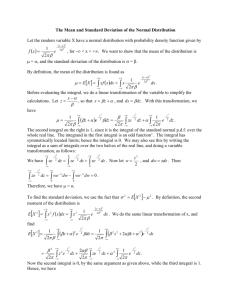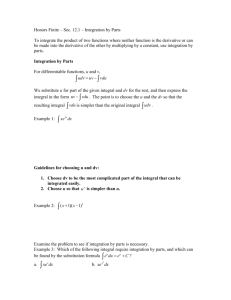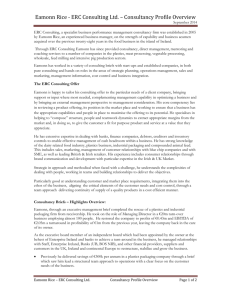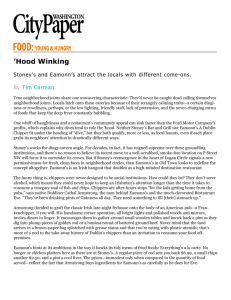CEFC_Parallel_Abstract - TARA
advertisement
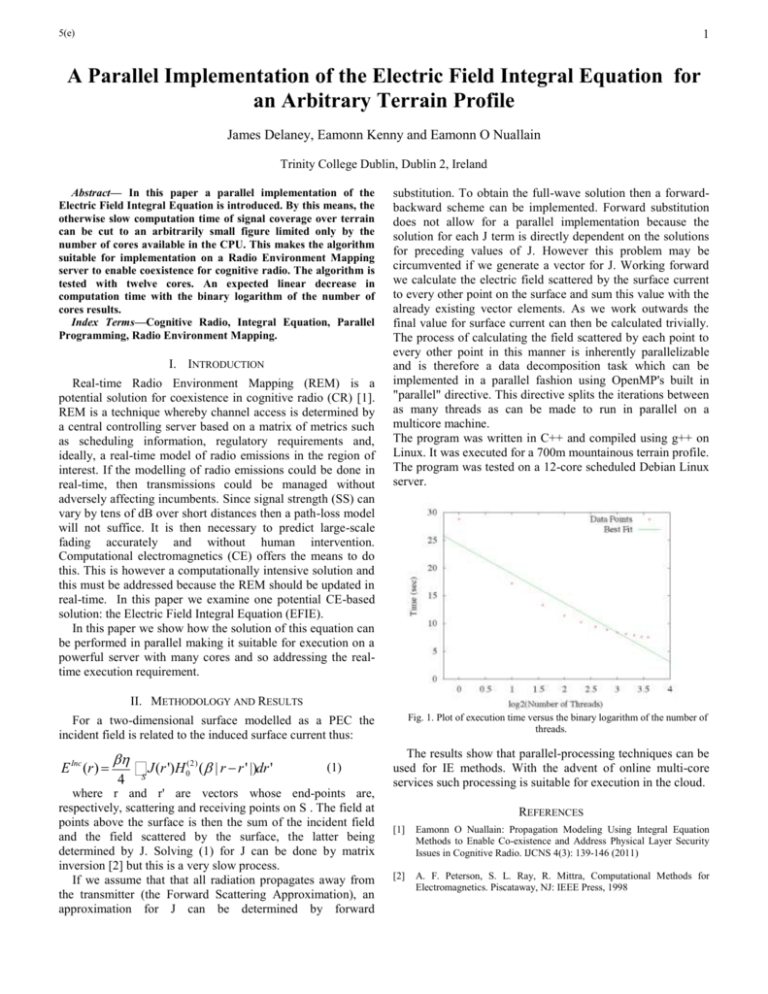
5(e) 1 A Parallel Implementation of the Electric Field Integral Equation for an Arbitrary Terrain Profile James Delaney, Eamonn Kenny and Eamonn O Nuallain Trinity College Dublin, Dublin 2, Ireland Abstract— In this paper a parallel implementation of the Electric Field Integral Equation is introduced. By this means, the otherwise slow computation time of signal coverage over terrain can be cut to an arbitrarily small figure limited only by the number of cores available in the CPU. This makes the algorithm suitable for implementation on a Radio Environment Mapping server to enable coexistence for cognitive radio. The algorithm is tested with twelve cores. An expected linear decrease in computation time with the binary logarithm of the number of cores results. Index Terms—Cognitive Radio, Integral Equation, Parallel Programming, Radio Environment Mapping. I. INTRODUCTION Real-time Radio Environment Mapping (REM) is a potential solution for coexistence in cognitive radio (CR) [1]. REM is a technique whereby channel access is determined by a central controlling server based on a matrix of metrics such as scheduling information, regulatory requirements and, ideally, a real-time model of radio emissions in the region of interest. If the modelling of radio emissions could be done in real-time, then transmissions could be managed without adversely affecting incumbents. Since signal strength (SS) can vary by tens of dB over short distances then a path-loss model will not suffice. It is then necessary to predict large-scale fading accurately and without human intervention. Computational electromagnetics (CE) offers the means to do this. This is however a computationally intensive solution and this must be addressed because the REM should be updated in real-time. In this paper we examine one potential CE-based solution: the Electric Field Integral Equation (EFIE). In this paper we show how the solution of this equation can be performed in parallel making it suitable for execution on a powerful server with many cores and so addressing the realtime execution requirement. substitution. To obtain the full-wave solution then a forwardbackward scheme can be implemented. Forward substitution does not allow for a parallel implementation because the solution for each J term is directly dependent on the solutions for preceding values of J. However this problem may be circumvented if we generate a vector for J. Working forward we calculate the electric field scattered by the surface current to every other point on the surface and sum this value with the already existing vector elements. As we work outwards the final value for surface current can then be calculated trivially. The process of calculating the field scattered by each point to every other point in this manner is inherently parallelizable and is therefore a data decomposition task which can be implemented in a parallel fashion using OpenMP's built in "parallel" directive. This directive splits the iterations between as many threads as can be made to run in parallel on a multicore machine. The program was written in C++ and compiled using g++ on Linux. It was executed for a 700m mountainous terrain profile. The program was tested on a 12-core scheduled Debian Linux server. II. METHODOLOGY AND RESULTS Fig. 1. Plot of execution time versus the binary logarithm of the number of threads. For a two-dimensional surface modelled as a PEC the incident field is related to the induced surface current thus: E Inc (r) = bh 4 ò S J(r')H 0(2) (b | r - r' |)dr' (1) where r and r' are vectors whose end-points are, respectively, scattering and receiving points on S . The field at points above the surface is then the sum of the incident field and the field scattered by the surface, the latter being determined by J. Solving (1) for J can be done by matrix inversion [2] but this is a very slow process. If we assume that that all radiation propagates away from the transmitter (the Forward Scattering Approximation), an approximation for J can be determined by forward The results show that parallel-processing techniques can be used for IE methods. With the advent of online multi-core services such processing is suitable for execution in the cloud. REFERENCES [1] Eamonn O Nuallain: Propagation Modeling Using Integral Equation Methods to Enable Co-existence and Address Physical Layer Security Issues in Cognitive Radio. IJCNS 4(3): 139-146 (2011) [2] A. F. Peterson, S. L. Ray, R. Mittra, Computational Methods for Electromagnetics. Piscataway, NJ: IEEE Press, 1998



